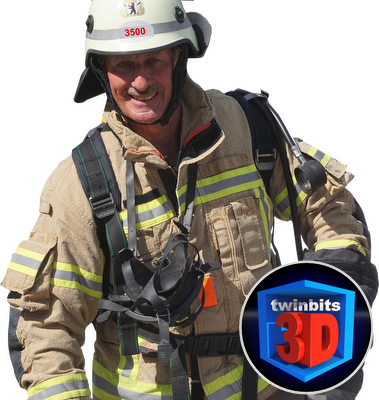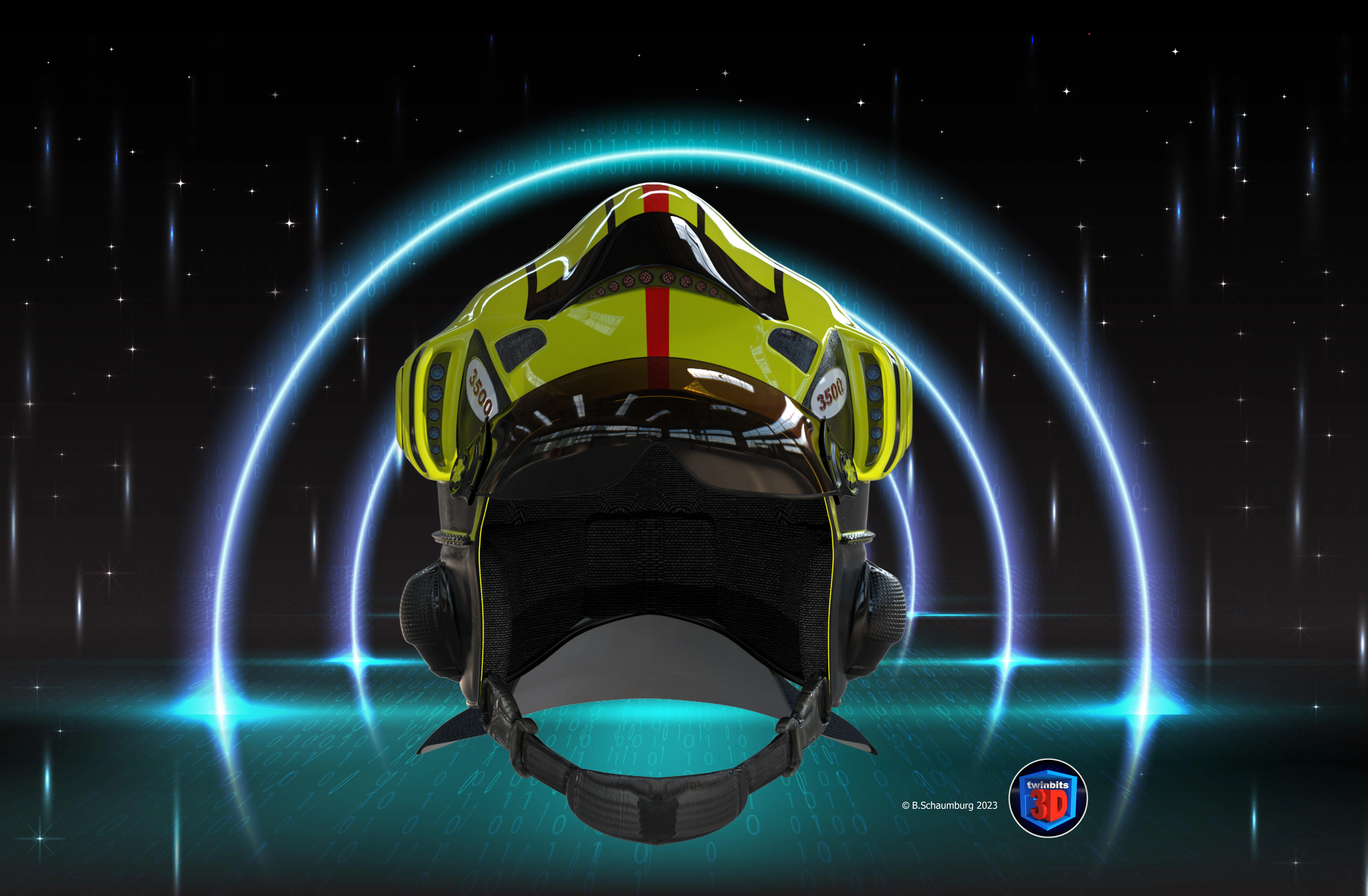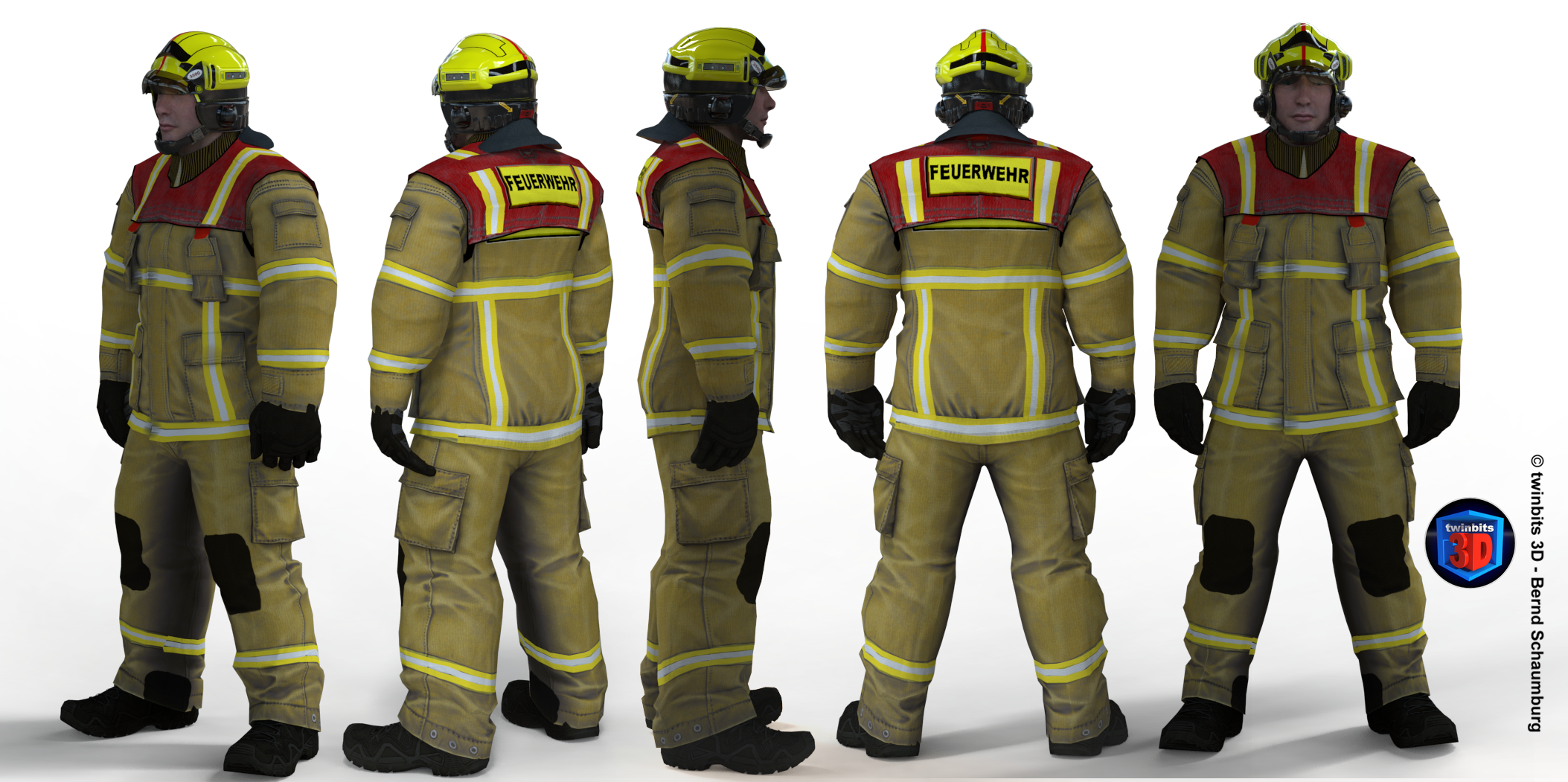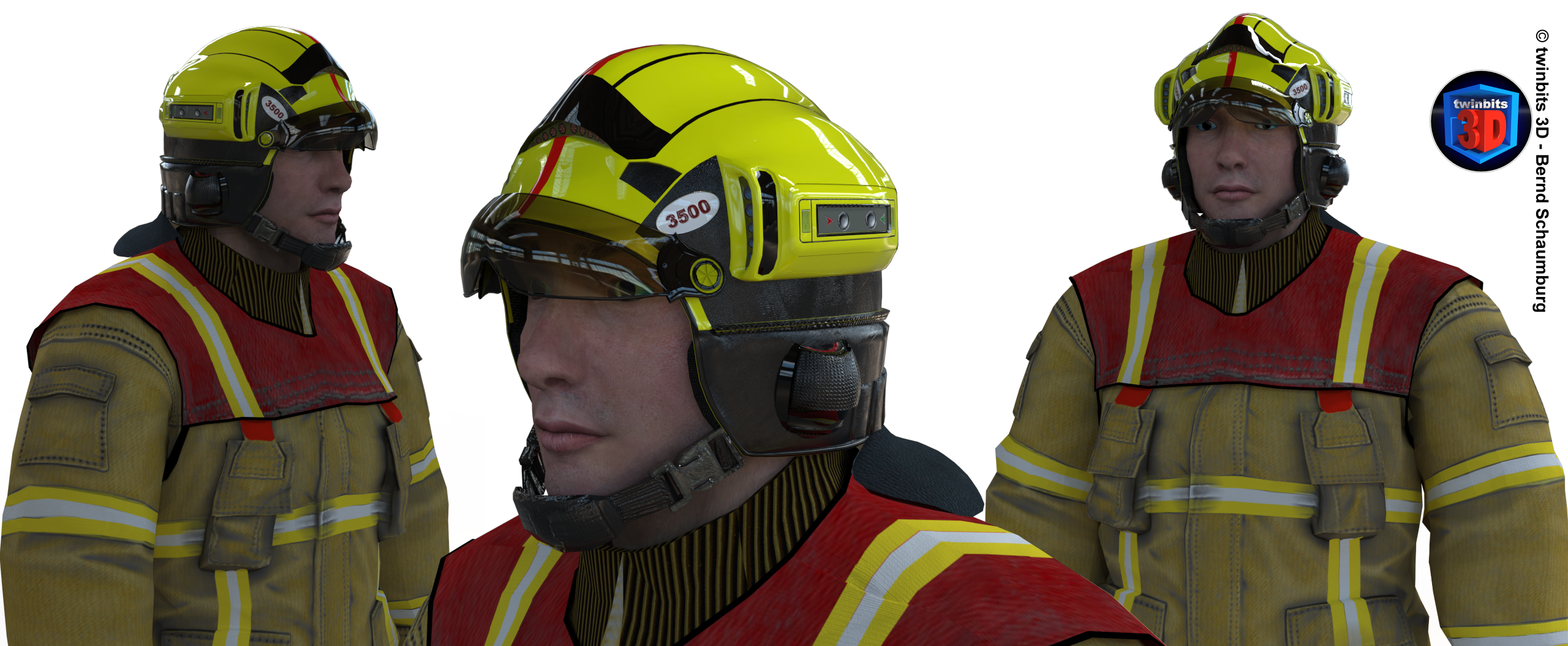1. Objective
The aim of this concept study is to develop an innovative firefighter helmet that combines maximum protection, ergonomic comfort, and modern technology integration.
Key goals include:
-
Enhancing safety standards (e.g., heat resistance, impact protection)
-
Optimizing ergonomics through lightweight design and improved ventilation
-
Integrating smart technologies for communication and situational awareness
-
Increasing operational efficiency and wearer comfort during missions
2. Analysis of Current Helmet Models
A review of existing firefighter helmets (e.g., Rosenbauer HEROS, Dräger HPS, MSA Gallet) revealed several areas for improvement:
-
Excessive weight and poor balance
-
Limited field of vision and compatibility issues with breathing apparatus
-
Communication difficulties in high-noise environments
-
Heat buildup inside the helmet
3. Design Concept
a) Form & Ergonomics
-
Compact, aerodynamic shape for better mobility
-
Modular system (detachable components, integrated visor, lamp mounts)
-
Adjustable inner padding with moisture management
b) Material Concept
-
Outer shell: High-temperature composite (carbon–aramid blend)
-
Inner layer: Energy-absorbing foam with heat-reflective coating
-
Surface finish: Reflective and chemical-resistant coating
c) Color & Design Concept
-
High-visibility colors with photoluminescent elements
-
Optional RFID or digital ID markings for personalization and tracking
4. Technological Integration
-
Communication module: Bluetooth/DECT integration for team connectivity
-
Heads-Up Display (HUD): Displays temperature, air supply, and location data
-
Sensor suite: CO₂, temperature, and motion sensors (fall detection and emergency alert)
-
Lighting: Integrated adaptive LED front lights
5. Sustainability & Maintenance
-
Replaceable components to extend product lifespan
-
Use of recyclable materials where possible
-
Digital maintenance tracking via QR code or connected mobile app
7. Evaluation & Outlook
-
Compliance with international standards (EN 443, ISO 16073)
-
Potential for field testing and mass production
-
Adaptable for specialized missions (e.g., technical rescue, wildland firefighting, hazmat operations)

















